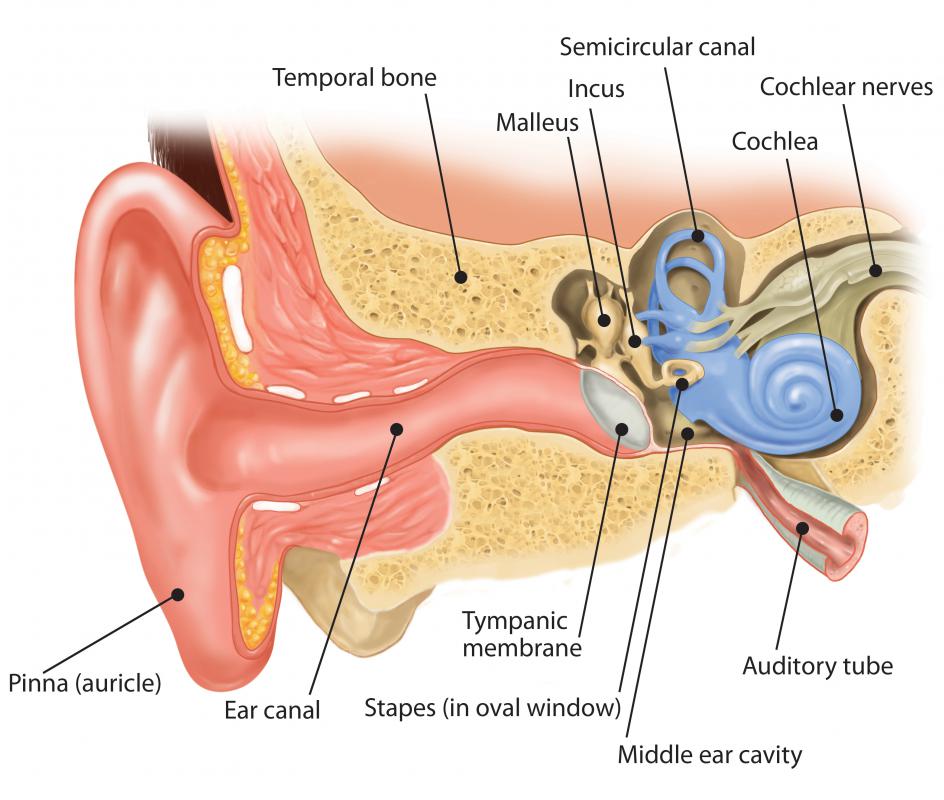At WiseGEEK, we're committed to delivering accurate, trustworthy information. Our expert-authored content is rigorously fact-checked and sourced from credible authorities. Discover how we uphold the highest standards in providing you with reliable knowledge.
What Is the Vestibular Aqueduct?
Human ears consist of an outer canal, the middle ear which contains three bones that react to the motion of the eardrum, and a complex inner structure. There is typically an organ called the vestibule in the center of the inner ear. On one side are usually canals that help control balance, and on the other is the cochlea, which converts sounds to nerve impulses using microscopic hair cells. Normal fluid pressure usually keeps the inner ear working properly. This pressure can be regulated by the vestibular aqueduct, a canal in the bone between the inner ear and the interior of the skull.
The vestibular aqueduct normally consists of a tube through the bone, and an interior membrane called the endolymphatic duct. After children are about three or four years old, the tube typically has a J-shape and is about 0.4 inches (10 millimeters) long. The normal average width of it is around 0.03 inches (0.8 millimeters), but the vestibular aqueduct can be up to about 0.05 inches (1.4 millimeters) wide. It is ordinarily shorter and straighter at birth, but development continues throughout early childhood.

Fluid called endolymph normally fills the vestibular aqueduct and flows away from the inner ear. At the other end, a structure called the endolymphatic sac usually sits within the skull and just outside the brain’s protective membranes. A vein and artery also lie inside the bony canal, which is part of the temporal bone of the skull. The endolymph typically has a high content of potassium and is very much like the fluids that surround cells in the body.

The health of the vestibular aqueduct often bears on proper balance and hearing. Deformities of its structure can lead to vertigo and other balance problems, as well as hearing loss. Some people are born with a canal that is too wide; if it is more than 1.5 millimeters (about 0.06 inches) in diameter, this can indicate Enlarged Vestibular Aqueduct Syndrome (EVAS). The condition is usually genetic, but hearing loss often progresses over time because fluid can back up into the inner ear and damage sensitive structures. Infections, injuries, and rapid changes in air pressure can trigger symptoms.
Doctors can see the vestibular aqueduct with a medical scan. Magnetic Resonance Imaging (MRI) and Computerized Tomagraphy (CT) scans are often able to analyze the small structures of the area in detail. The aqueduct usually still develops after a baby is born, and developmental damage can occur as the area matures.
AS FEATURED ON:
AS FEATURED ON:












Discuss this Article
Post your comments